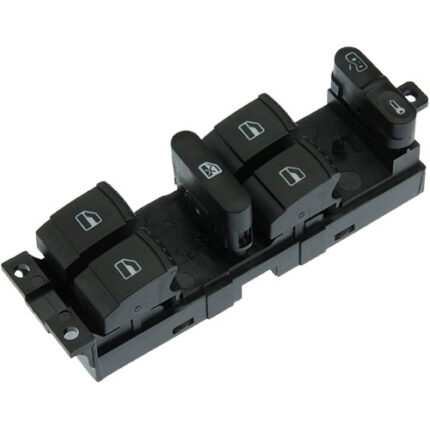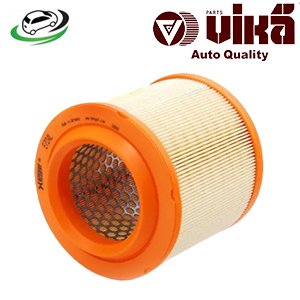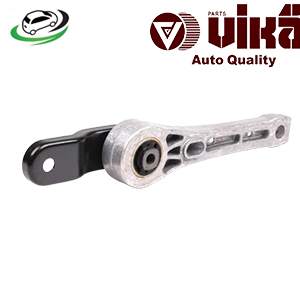-10%
Get Rear Engine Mount Audi TT MKII-2.0T/ Audi TTS-2.0T/ VW CC FWD 2.0T/ VW Passat B6 FWD 2.0T 3C0199855J
The engine mount, also known as the motor mount, is a critical component in a vehicle’s drivetrain system. Its primary role is to secure the engine to the vehicle’s frame or chassis while isolating engine vibrations and shocks from the passenger compartment. Understanding the function, construction, common issues, and maintenance of engine mounts is essential for maintaining vehicle performance and comfort.
Function of the Engine Mount
The engine mount serves several vital functions within a vehicle’s drivetrain system:
- Securing the Engine:
- Stability: The engine mount holds the engine in place, securing it to the vehicle’s frame or subframe. This stability is crucial for maintaining proper alignment of the engine and drivetrain components.
- Prevention of Movement: By anchoring the engine, the mount prevents excessive movement that could damage other components or affect vehicle handling.
- Vibration Isolation:
- Engine Vibration: The engine generates vibrations during operation, which can be transferred to the vehicle’s frame and passenger compartment. Engine mounts are designed to absorb and dampen these vibrations, enhancing comfort and reducing noise.
- Shock Absorption: The mounts also absorb shocks from engine movements, such as during acceleration or braking, minimizing impact on the vehicle’s structure.
- Noise Reduction:
- Minimizing Noise: Engine mounts help reduce noise from the engine, contributing to a quieter and more pleasant driving experience. This is achieved by isolating engine sounds from the interior of the vehicle.
- Allowing Engine Movement:
- Flexibility: Engine mounts are designed to allow controlled movement of the engine. This flexibility accommodates engine movement due to acceleration, braking, and cornering without causing misalignment or damage.
Construction of the Engine Mount
Engine mounts are typically made up of several components that work together to perform their functions:
- Mounting Bracket:
- Metal Bracket: The metal bracket is the part of the mount that attaches to the vehicle’s frame or subframe. It provides a sturdy base for securing the engine.
- Bolted Connection: The bracket is bolted or welded to the frame, ensuring a secure attachment.
- Mounting Pad:
- Rubber or Polyurethane Pad: The mounting pad, often made of rubber or polyurethane, is positioned between the engine and the metal bracket. This pad absorbs vibrations and shocks, providing cushioning and reducing noise.
- Isolation Function: The pad’s flexibility allows for engine movement while minimizing the transfer of vibrations and noise.
- Engine Cradle:
- Supporting Structure: In some designs, the engine mount includes an engine cradle or support structure that further secures the engine and provides additional stability.
- Attachment Points: The cradle typically features attachment points for securing the engine to the vehicle.
- Hydraulic or Pneumatic Components:
- Advanced Designs: Some modern engine mounts incorporate hydraulic or pneumatic elements to enhance vibration isolation. These mounts use fluid or air to absorb and dampen engine vibrations more effectively.
Common Issues and Symptoms
Engine mounts can wear out or become damaged over time, leading to several issues. Recognizing the symptoms of a failing engine mount can help address problems early and prevent further damage:
- Excessive Engine Movement:
- Symptom: Noticeable engine movement or shifting, especially during acceleration, braking, or turning, may indicate a worn or damaged mount.
- Cause: Worn mounts can no longer effectively control engine movement, leading to excessive shifting or swaying.
- Vibration and Noise:
- Symptom: Increased vibrations felt through the steering wheel or floor, as well as unusual noises such as clunking or banging, can signal a problem with the engine mount.
- Cause: Damaged or degraded mounts may fail to absorb vibrations and noise, transferring them to the passenger compartment.
- Engine Noise During Acceleration:
- Symptom: A loud clunking or banging noise when accelerating or shifting gears may be due to a faulty engine mount.
- Cause: Engine mounts that are not securely holding the engine can cause it to shift or impact other components, resulting in noise.
- Difficulty Shifting Gears:
- Symptom: Difficulty or roughness when shifting gears can sometimes be attributed to a damaged engine mount.
- Cause: Excessive engine movement can affect the alignment of the transmission and drivetrain components, making gear shifting challenging.
- Visual Inspection Issues:
- Symptom: Visible signs of damage, such as cracks, tears, or leaks in the rubber or polyurethane material, indicate that the engine mount needs attention.
- Cause: Physical damage to the mount can impair its effectiveness and lead to further issues with engine stability and performance.
Maintenance and Replacement
Regular maintenance and timely replacement of engine mounts are essential for ensuring vehicle performance and comfort. Here are some tips for maintaining and replacing engine mounts:
- Regular Inspection:
- Visual Checks: Periodically inspect the engine mounts for visible signs of wear, damage, or deterioration. Look for cracks, tears, or fluid leaks in the mounting pad.
- Vibration Test: Pay attention to any changes in engine vibration or noise, and address any unusual symptoms promptly.
- Replacement:
- When to Replace: Replace engine mounts if they are damaged, worn, or no longer effectively isolating vibrations and shocks. Timely replacement can prevent further damage to the engine and drivetrain components.
- Procedure: To replace an engine mount, lift the vehicle securely, remove the old mount, and install the new one. Ensure that the new mount is properly aligned and securely fastened.
- Professional Help:
- Expert Diagnosis: If you are unsure about diagnosing or replacing engine mounts yourself, consult a professional mechanic or automotive technician. They can provide accurate diagnosis and ensure proper installation of replacement mounts.
- Preventative Measures:
- Driving Habits: Avoid excessive engine stress by driving smoothly and avoiding hard acceleration or abrupt braking, which can help prolong the life of the engine mounts.
- Regular Maintenance: Follow the vehicle manufacturer’s maintenance schedule and have the engine mounts checked during routine service to catch any issues early.
Benefits of Well-Maintained Engine Mounts
Well-maintained engine mounts offer several benefits for vehicle performance, comfort, and safety:
- Improved Comfort:
- Reduced Vibration: Effective engine mounts minimize vibrations and noise, contributing to a smoother and more comfortable ride for passengers.
- Enhanced Vehicle Stability:
- Engine Alignment: Properly functioning engine mounts ensure that the engine remains securely in place, contributing to overall vehicle stability and handling.
- Extended Component Life:
- Reduced Wear: By isolating vibrations and shocks, engine mounts help reduce wear and tear on other drivetrain components, such as the transmission and drive belts.
- Noise Reduction:
- Quieter Operation: Effective engine mounts reduce engine noise, creating a quieter and more pleasant driving experience.
- Preventive Maintenance:
- Avoiding Damage: Regular inspection and timely replacement of engine mounts help prevent more significant damage to the engine and drivetrain, potentially saving on costly repairs.
Follow us on Facebook for more parts.



